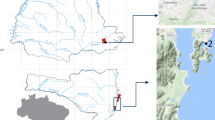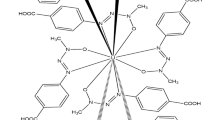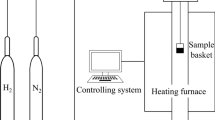Abstract
The accurate determination of uranium content in geological samples is extremely important for the exploration and development of uranium resources. In this study, based on titration method for the determination of uranium content of the nuclear industry standard test, the pretreatment process such as sample dissolution, sample dissolution reagent and test method has been improved according to the characteristics of geological samples. The results showed that the sample was moistened with water before acid treatment, and the dissolving vessel was adjusted from 100 mL beaker to 150 mL triangle flask, which basically avoided the problem of sputtering during the boiling process. The amount of phosphoric acid added in the sample dissolution reagent was increased to ensure that the ferrous could completely reduce the hexavalent uranium in the sample at the appropriate phosphoric acid concentration, and the low measurement result caused by the low phosphoric acid concentration is avoided. In the test, the amount of reducing agent ferrous sulfate is changed to 1 mL, and the amount of sodium nitrite was changed to 3–4 drops, which improved the sensitivity of titration endpoint and realized clear determination of titration end point. The RSD of the improved test method is better than 2.5%, and the standard recovery is between 99 and 102%. The results are accurate and reliable, can meet the needs of scientific research and production. It can provide technical support for uranium exploration and natural uranium production.

Similar content being viewed by others
References
Mu P, Cheng W (2018) Titration method for the determination of uranium in minerals. Chem Anal Meterage 27(05):59–63
BeiJing: Standards Press of China (1984) Ferrous sulfate reduction/ammonium vanadate oxidation titration method. Ministry of Nuclear Industry of the People's Republic of China GB/T EJ267.2-84
Feng Y, Peng C, Zhang C (2020) Study on the detection method of uranium content in acid leaching process. Jiangxi Chem Ind 36(01):78–80
Song H, Wu Y, Hao J (2007) Principles and experimental conditions for the titration of uranium by ammonium vanadate are discussed. Friends Chem Ind 27(13):33–34
Parthasarathy S, Ganesh KV, Subbarao RV (2021) A remote conductometric titration method for simultaneous determination of uranium and nitric acid concentrations at elevated temperatures. J Radioanal Nucl Chem 327:1087–1093
Yang J, Tan H, Hu K (2004) Determination of sulfate-titanium-vanadate by urmonium. Uranium Min Metall 23(03):147–150
Xu W, Sun R, Zhu X, Liu P (2010) Improvement of method for determination of trace uranium in ore by microtitration of ammonium vanadate. Rock Ore Test 29(03):325–327
Bi M, Liao S, Li X (2023) Optimization of determination method of thorium element in typical associated mine slag. Radiat Res Radiat Technol J 41(04):99–106
Jiang L, Deng X, Yan S, Li J, Jiang X, Li J, Huang W (2017) Progress in analytical methods for uranium in rock minerals. Guangdong Chem Ind 44(18):130 + 140
Shao W (1983) Discussion on some problems of uranium measurement by ferrous iron method. Uranium Min Metall 2(03):41–45
Acknowledgements
This project was major supported by the Nuclear energy development project (technology for the mining and metallurgy of associated uranium resources – on the demonstration of uranium co-mining in Bayan Ura, Inner Mongolia) and China Uranium Industry Co., Ltd.- the Foundation of State Key Laboratory of Nuclear Resources and Environment Joint Innovation Fund Project (2022NRE-LH-15) and Natural Science Foundation of Jiangxi Province - Synthesis of triphenylphosphine polymer modified by irradiation and study on the supernormal separation and enrichment behavior of rhenium (20232ACB203014) .
Author information
Authors and Affiliations
Corresponding authors
Ethics declarations
Conflict of interest
We declare that we have no known competing financial interests or personal relationships that could have appeared to influence the work reported in this paper.
Additional information
Publisher's Note
Springer Nature remains neutral with regard to jurisdictional claims in published maps and institutional affiliations.
Rights and permissions
Springer Nature or its licensor (e.g. a society or other partner) holds exclusive rights to this article under a publishing agreement with the author(s) or other rightsholder(s); author self-archiving of the accepted manuscript version of this article is solely governed by the terms of such publishing agreement and applicable law.
About this article
Cite this article
Li, H., Zhang, Z., Jin, H. et al. Optimization and application of ferrous reduced ammonium vanadate titration method for the determination of uranium content in geological samples. J Radioanal Nucl Chem 333, 673–679 (2024). https://doi.org/10.1007/s10967-023-09284-7
Received:
Accepted:
Published:
Issue Date:
DOI: https://doi.org/10.1007/s10967-023-09284-7




